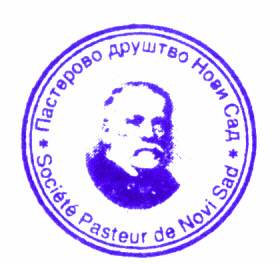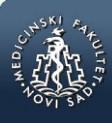md-medicaldata
Main menu:
- Naslovna/Home
- Arhiva/Archive
- Godina 2024, Broj 2
- Godina 2024, Broj 1
- Godina 2023, Broj 3
- Godina 2023, Broj 1-2
- Godina 2022, Broj 3
- Godina 2022, Broj 1-2
- Godina 2021, Broj 3-4
- Godina 2021, Broj 2
- Godina 2021, Broj 1
- Godina 2020, Broj 4
- Godina 2020, Broj 3
- Godina 2020, Broj 2
- Godina 2020, Broj 1
- Godina 2019, Broj 3
- Godina 2019, Broj 2
- Godina 2019, Broj 1
- Godina 2018, Broj 4
- Godina 2018, Broj 3
- Godina 2018, Broj 2
- Godina 2018, Broj 1
- Godina 2017, Broj 4
- Godina 2017, Broj 3
- Godina 2017, Broj 2
- Godina 2017, Broj 1
- Godina 2016, Broj 4
- Godina 2016, Broj 3
- Godina 2016, Broj 2
- Godina 2016, Broj 1
- Godina 2015, Broj 4
- Godina 2015, Broj 3
- Godina 2015, Broj 2
- Godina 2015, Broj 1
- Godina 2014, Broj 4
- Godina 2014, Broj 3
- Godina 2014, Broj 2
- Godina 2014, Broj 1
- Godina 2013, Broj 4
- Godina 2013, Broj 3
- Godina 2013, Broj 2
- Godina 2013, Broj 1
- Godina 2012, Broj 4
- Godina 2012, Broj 3
- Godina 2012, Broj 2
- Godina 2012, Broj 1
- Godina 2011, Broj 4
- Godina 2011, Broj 3
- Godina 2011, Broj 2
- Godina 2011, Broj 1
- Godina 2010, Broj 4
- Godina 2010, Broj 3
- Godina 2010, Broj 2
- Godina 2010, Broj 1
- Godina 2009, Broj 4
- Godina 2009, Broj 3
- Godina 2009, Broj 2
- Godina 2009, Broj 1
- Supplement
- Galerija/Gallery
- Dešavanja/Events
- Uputstva/Instructions
- Redakcija/Redaction
- Izdavač/Publisher
- Pretplata /Subscriptions
- Saradnja/Cooperation
- Vesti/News
- Kontakt/Contact
 Pasterovo društvo
Pasterovo društvo
- Disclosure of Potential Conflicts of Interest
- WorldMedical Association Declaration of Helsinki Ethical Principles for Medical Research Involving Human Subjects
- Committee on publication Ethics
CIP - Каталогизација у публикацији
Народна библиотека Србије, Београд
61
MD : Medical Data : medicinska revija = medical review / glavni i odgovorni urednik Dušan Lalošević. - Vol. 1, no. 1 (2009)- . - Zemun : Udruženje za kulturu povezivanja Most Art Jugoslavija ; Novi Sad : Pasterovo društvo, 2009- (Beograd : Scripta Internacional). - 30 cm
Dostupno i na: http://www.md-medicaldata.com. - Tri puta godišnje.
ISSN 1821-1585 = MD. Medical Data
COBISS.SR-ID 158558988
NAJČEŠĆE PERIOPERATIVNE KOMPLIKACIJE OPŠTE ANESTEZIJE
/
COMMON PERIOPERATIVE COMPLICATIONS OF GENERAL ANAESTHESIA
Authors
Duška Ilić2, Dragan Turanjanin1,2, Nikola Bošković1,2, Izabella Fabri Galamboš1,2, Nemanja Galetić2, Anna Uram Benka1,2
1Univerzitet u Novom Sadu, Medicinski fakultet Novi Sad, Srbija
2Institut za zdravstvenu zaštitu dece i omladine Vojvodine, Novi Sad, Srbija
UDK: 616-089.5-06
The paper was received / Rad primljen: 02.10.2024.
Accepted / Rad prihvaćen: 20.11.2024.
Correspondence to:
Duška Ilić
Vase Pelagića 10, Novi Sad;
Tel: 065 4577363
e-mail: duskailic12@gmail.com
Sažetak
Opšta anestezija se danas smatra sve bezbednijom medicinskom procedurom, koja ipak podrazmeva određene rizike i komplikacije. Postojanje rizika se uglavnom pripisuje karakteristikama pacijenta, ali i tehnici anestezije i planiranoj proceduri. Komplikacije opšte anestezije koje se definišu kao najčešće su: respiratorne, kardiovaskularne, gastrointestinalne, urinarne, neurološke i ostale specifične komplikacije. Laringospazam se najčešće javlja kod trudnica i dece, dok se bronhospazam javlja češće kod pacijenata sa povećanom reaktivnošću disajnih puteva, usled skorašnje respiratorne infekcije, astme i hroničnog bronhitisa, atopijske konstitucije ili kod pušača. Hipotenzija predstavlja čestu komplikaciju kod pacijenata koji se operišu u opštoj anesteziji sa incidencom do 30%. Intraoperativna kritična hipotenzija je povezana sa većim postoperativnim mortalitetom. Za blagovremeno otkrivanje aritmija neophodno je kontinuirano praćenje elektrokardiograma, posebno usled mogućeg prekomernog izlučivanje endogenih kateholamina u toku neodgovarajuće analgezije i dubine anestezije, kao i tokom manipulacije disajnim putem. Postoperativna mučnina i povraćanje je vrlo česta komplikacija opšte anestezije, a faktori rizika su: ženski pol, gojaznost, pozitivna istorija na prethodnu postoperativnu mučninu i povraćanje, teško oboleli pacijenti, pacijenti sa povredama glave, korisnici opijata, pacijenti sa opstrukcijom segmenata gastrointestinalog trakta, dužina operacije kao i vrsta operacije i anestezije. Postoperativne kognitivne disfunkcije se čašće javljaju kod bolesnika starije životne dobi, kao i kod psihijatrijskih i neuroloških komorbiditeta. Neke od ostalih komplikacija su: otežan disajni put, anafilaktičke reakcije, budnost tokom anestezije i traumatske povrede.
Ključne reči:
opšta anestezija; laringospazam; postoperativna mučnina i povraćanje, postoperativna kognitivna disfunkcija
Abstract
General anesthesia is considered as a safe medical procedure, which is nevertheless associated certain risks and complications. The existence of risk is mainly attributed to the characteristics of the patient, but also to the technique of anesthesia and the planned procedure. Complications of general anesthesia that are most common are: respiratory, cardiovascular, gastrointestinal, urinary, neurological and other specific complications. Laryngospasm occurs most often in pregnant women and children, while bronchospasm occurs more often in patients with increased reactivity of the airway, due to a recent respiratory infection, asthma or chronic bronchitis, atopic constitution or in smokers. Hypotension is a frequent complication in patients undergoing surgery under general anesthesia with an incidence of 30%. Intraoperative critical hypotension is associated with higher postoperative mortality. Continuous intraoperative electrocardiogram monitoring is necessary for the timely detection of arrhythmias, especially due to the possible excessive secretion of endogenous catecholamines during inadequate analgesia and anesthesia, as well as during airway manipulation. Postoperative nausea and vomiting is a very common complication of general anesthesia, with risk factors beeing: female gender, obesity, positive history of previous postoperative nausea and vomiting, critically ill patients, patients with head injuries, opiate users, patients with gastrointestinal obstruction, the lenght of surgery and type of surgery and anesthesia. Postoperative cognitive dysfunction occur more often in elderly patients, as well as in patients with psychiatric and neurological comorbidities. Other complications include: difficulty airway, occurrence of anaphylactic reaction, awareness during anesthesia and traumatic injuries.
Key words:
general anesthesia, laryngospasm, postoperative nausea and vomiting, postoperative cognitive dysfunction.
References:
- Bartels K, Frendl G, Sprung J, Weingarten TN, Subramaniam B, Martinez Ruiz R, et al. Postoperative pulmonary complications with adjuvant regional anesthesia versus general anesthesia alone: a sub-analysis of the Perioperative Research Network study. BMC Anesthesiol 2022;22(1):136.
- Mayhew D, Mendonca V, Murthy BVS. A review of ASA physical status – historical perspectives and modern developments. Anaesthesia 2019; 74:373-9.
- Drašković, B. Anestezija sa perioperativnom medicinom. Novi Sad: Medicinski fakultet Novi Sad; 2019.
- Miller RD, Pardo MC Jr. Basics of anesthesia. Sixth edition. Philadelphia, PA: Elsevier/Saunders; 2011.
- Pino RM, Albrecht MA, Bittner EA, Chitilian HV, Levine WC, Vassallo SA. Clinical Anesthesia Procedures of the Massachusetts General Hospital. Ninth edition. Boston: Wolters Kluwer; 2016.
- Ninke T, Eifer A, Dieterich HJ, Groene P. [Characteristics of the fetal and infant respiratory system: What the pediatric anesthetist should know]. Anaesthesiologie 2024;73(1):65-74.
- Harris M, Chung F. Complications of general anesthesia. Clin Plast Surg 2013;40(4):503-13.
- Jukić M, Husedžinović I, Kvolik S, Majerić Kogler V, Perić M, Žunić J. Klinička anesteziologija. Drugo izdanje. Zagreb: Medicinska naklada; 2013.
- Turanjanin D, Rakić G, Drašković B. S(+)-ketamin: pregled farmakoloških dejstava i kliničke primene (S(+)-ketamin: farmakologija i klinička primena). Serbian Journal of Anesthesia and Intensive Therapy. 2023;45(5-6):93-105.
- Webb A, Angus DC, Finfer S, Gattinoni L, Singer M. Oxford Textbook of Critical Care. Second edition. Oxford: Oxford University Press; 2016.
- Apfel CC, Korttila K, Abdalla M, Kerger H, Turan A, Vedder I, et al. IMPACT Investigators. A factorial trial of six interventions for the prevention of postoperative nausea and vomiting. N Engl J Med 2004;350(24):2441-51.
- Barash PG, Cullen BF, Stoelting RK, Cahalan MK, Stock MC, Ortega R. Clinical Anesthesia. Seventh edition. Philadelphia, PA: Wolters Kluwer Health, Lippincott Williams & Wilkins; 2013.
- Olgers TJ, Dijkstra RS, Drost-de Klerck AM, Ter Maaten JC. The ABCDE primary assessment in the emergency department in medically ill patients: an observational pilot study. Neth J Med 2017;75(3):106-11.
- Mohamed SA, Rady A, Youssry M, Abdelaziz Mohamed MR, Gamal M. Performance of Melatonin as Prophylaxis in Geriatric Patients with Multifactorial Risk for Postoperative Delirium Development: A Randomized Comparative Study. Turk J Anaesthesiol Reanim 2022;50(3):178-86.
- Bramley P, McArthur K, Blayney A, McCullagh I. Risk factors for postoperative delirium: An umbrella review of systematic reviews. Int J Surg 2021;93:106063.
- Harper NJN, Cook TM, Garcez T, Farmer L, Floss K, Marinho S, et al. Anaesthesia, surgery, and life-threatening allergic reactions: epidemiology and clinical features of perioperative anaphylaxis in the 6th National Audit Project (NAP6). Br J Anaesth 2018;121(1):159-71.
- 17, Morimoto K, Tatsumi K, Chigusa Y, Komatsu M, Egi M, Mandai M, et al. Uneventful vaginal delivery using epidural anesthesia in patient with exercise induced anaphylaxis: a case report and literature review. Nagoya J Med Sci 2024;86(2):345-50..
- Beebe D, Puram VV, Gajic S, Thyagarajan B, Belani KG. Genetics of Malignant Hyperthermia: A Brief Update. J Anaesthesiol Clin Pharmacol 2020;36(4):552-5.
- Marino PL. Marino’s The ICU Book. Fourth edition. Philadelphia, PA: Wolters Kluwer Health/Lippincott Williams & Wilkins; 2014.
- Hopkins PM, Girard T, Dalay S, Jenkins B, Thacker A, Patteril M, et al. Malignant hyperthermia 2020: Guideline from the Association of Anaesthetists. Anaesthesia 2021;76(5):655-64.
- Sebel PS, Bowdle TA, Ghoneim MM, Rampil IJ, Padilla RE, Gan TJ, Domino KB. The incidence of awareness during anesthesia: a multicenter United States study. Anesth Analg 2004;99(3):833-9.
- Cascella M, Bimonte S, Amruthraj NJ. Awareness during emergence from anesthesia: Features and future research directions. World J Clin Cases 2020;8(2):245-54.
- Idrees SR, Fujimura K, Bessho K. Dental trauma related to general anesthesia: should the anesthesiologist perform a preanesthetic dental evaluation? Oral Health Dent Manag 2014;13(2):271-4.
PDF: 08 - Ilić D. et al. MD-Medical Data 2024;16(3) 171-176.pdf
 Medicinski fakultet
Medicinski fakultet